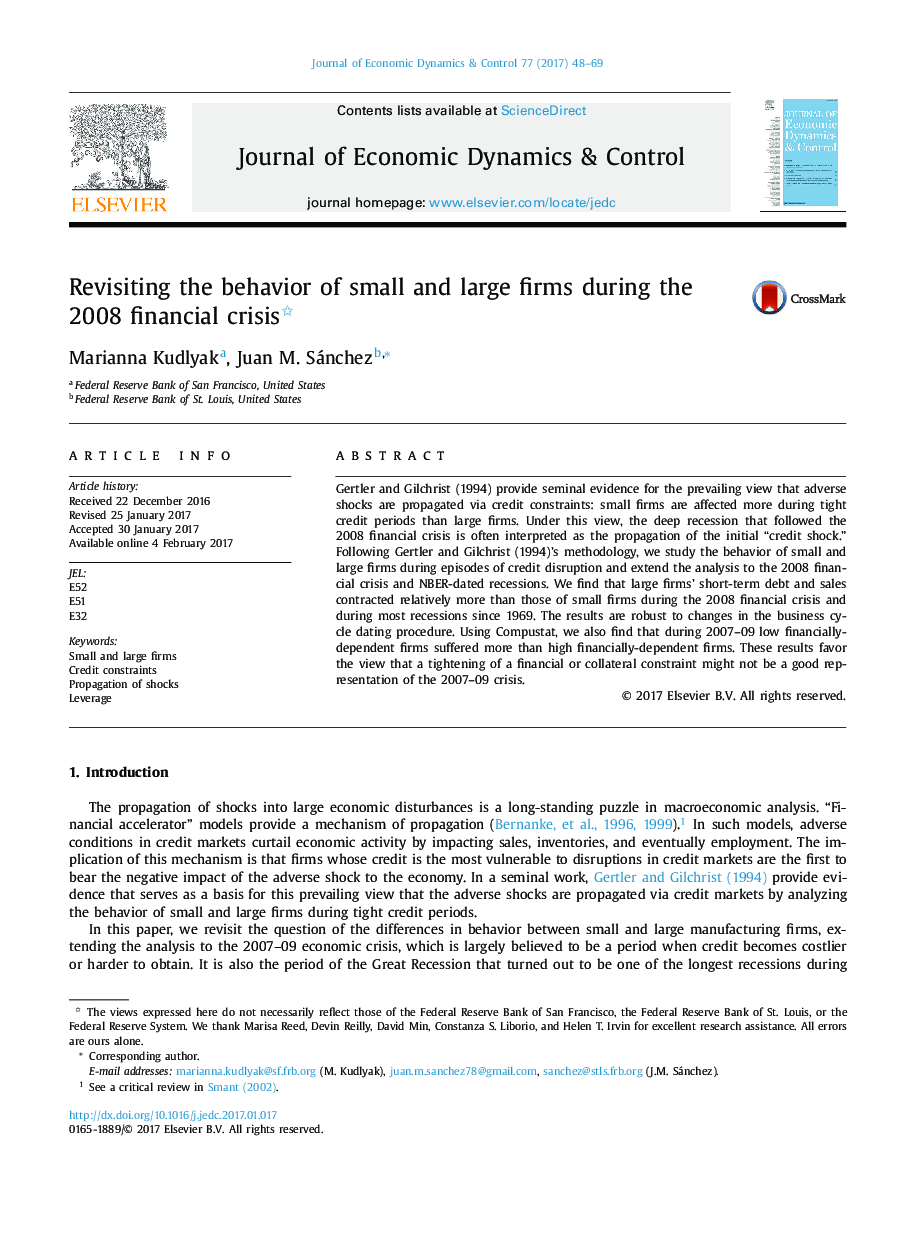| Article ID | Journal | Published Year | Pages | File Type |
|---|---|---|---|---|
| 5098068 | Journal of Economic Dynamics and Control | 2017 | 22 Pages |
Abstract
Gertler and Gilchrist (1994) provide seminal evidence for the prevailing view that adverse shocks are propagated via credit constraints: small firms are affected more during tight credit periods than large firms. Under this view, the deep recession that followed the 2008 financial crisis is often interpreted as the propagation of the initial “credit shock.” Following Gertler and Gilchrist (1994)'s methodology, we study the behavior of small and large firms during episodes of credit disruption and extend the analysis to the 2008 financial crisis and NBER-dated recessions. We find that large firms' short-term debt and sales contracted relatively more than those of small firms during the 2008 financial crisis and during most recessions since 1969. The results are robust to changes in the business cycle dating procedure. Using Compustat, we also find that during 2007-09 low financially-dependent firms suffered more than high financially-dependent firms. These results favor the view that a tightening of a financial or collateral constraint might not be a good representation of the 2007-09 crisis.
Keywords
Related Topics
Physical Sciences and Engineering
Mathematics
Control and Optimization
Authors
Marianna Kudlyak, Juan M. Sánchez,
